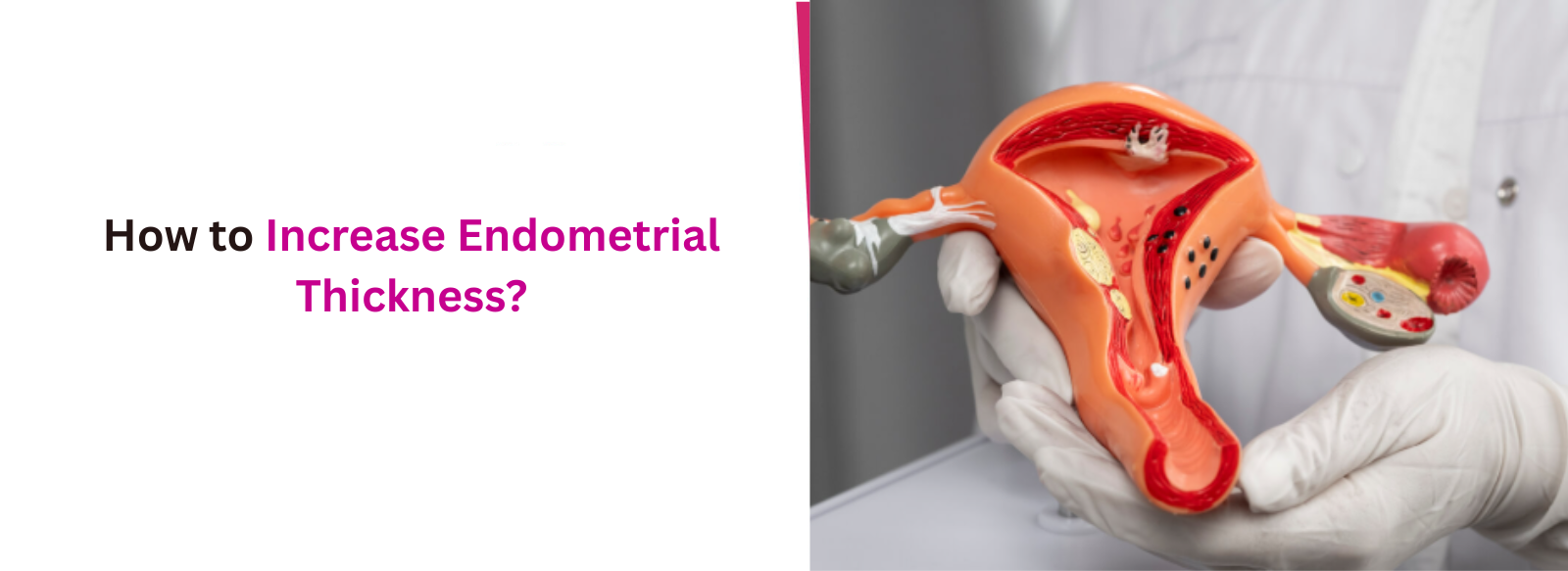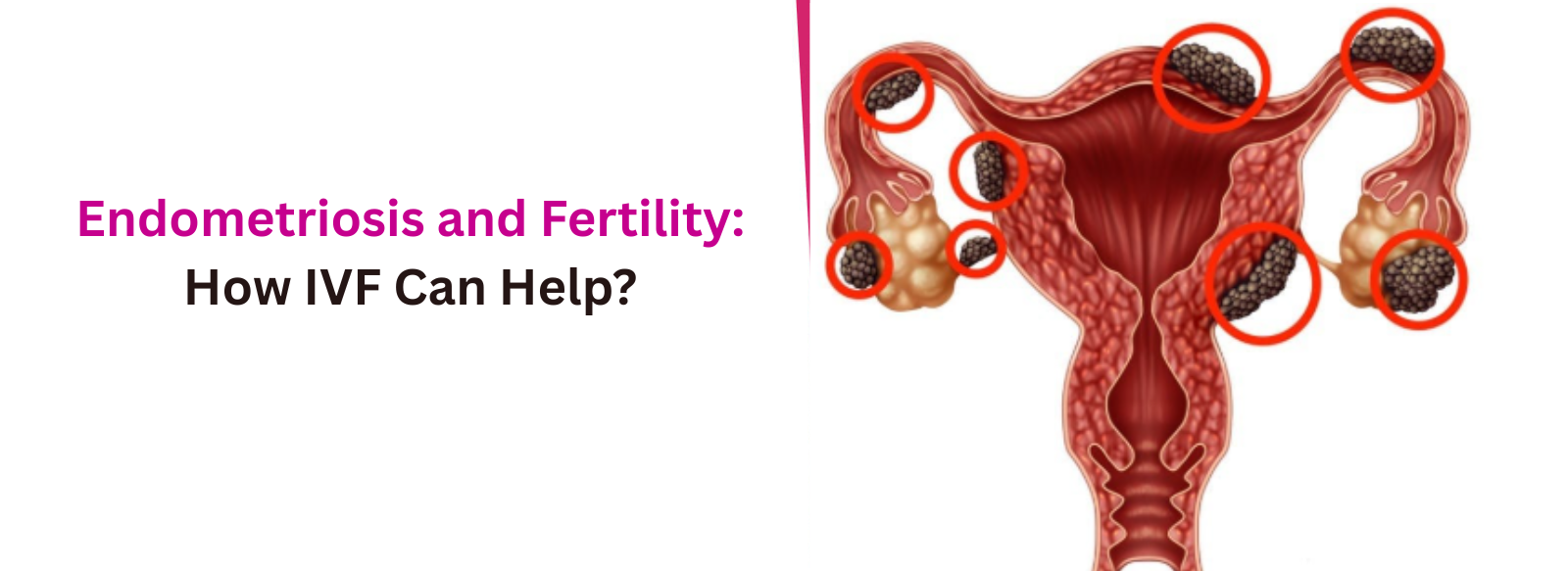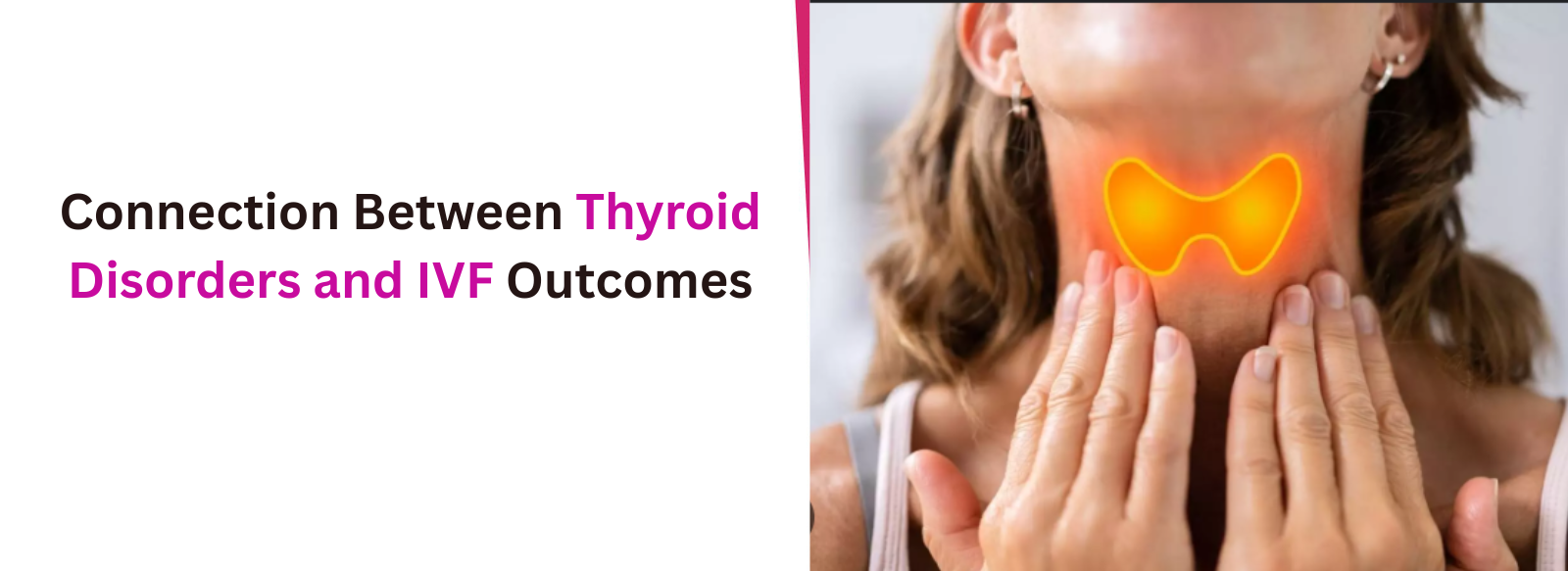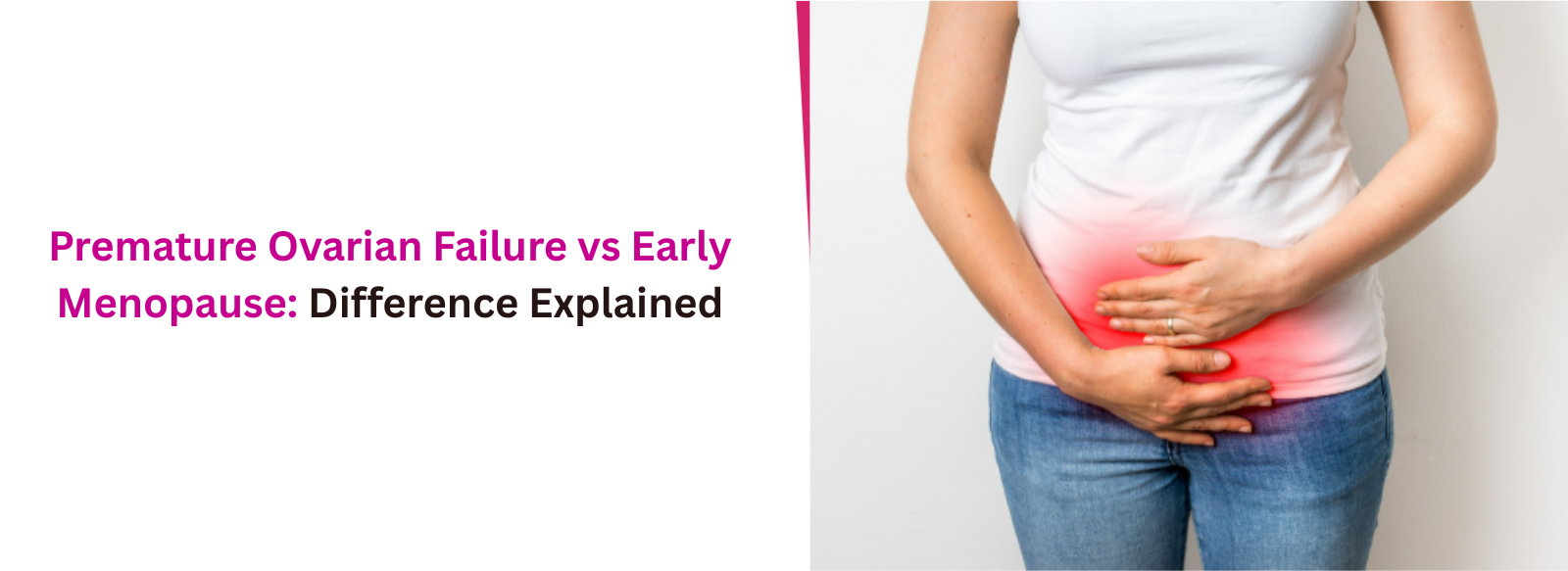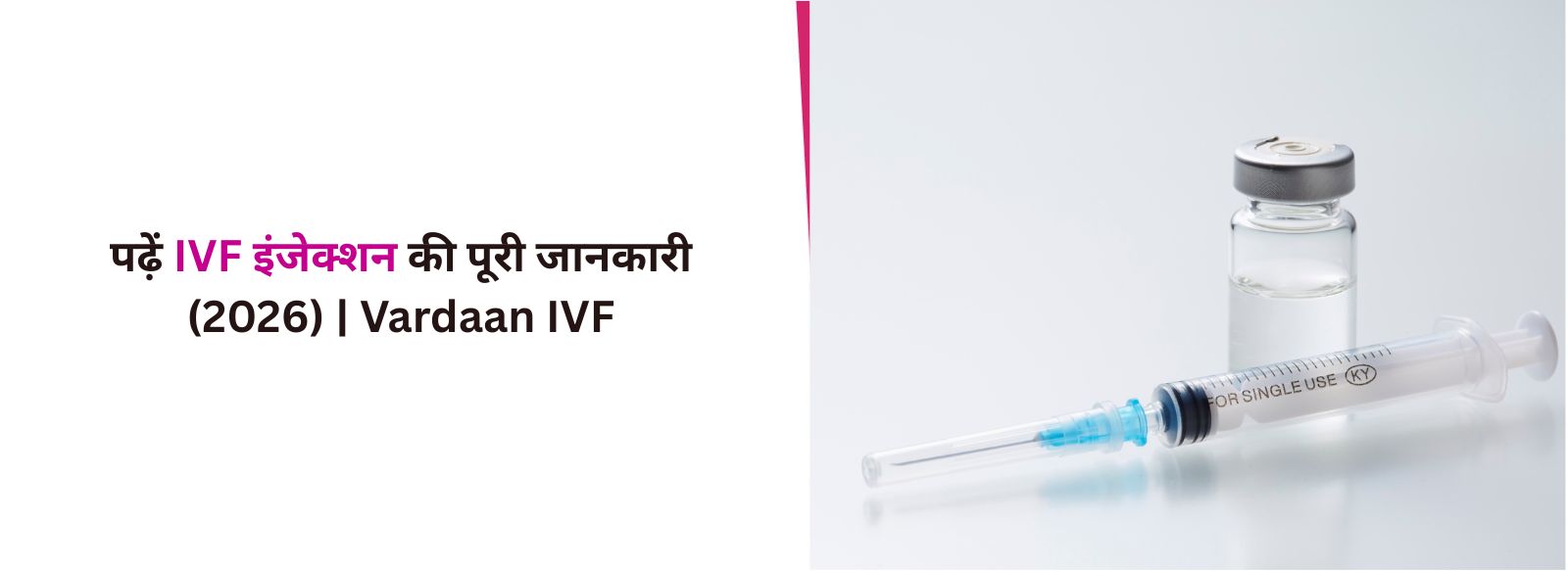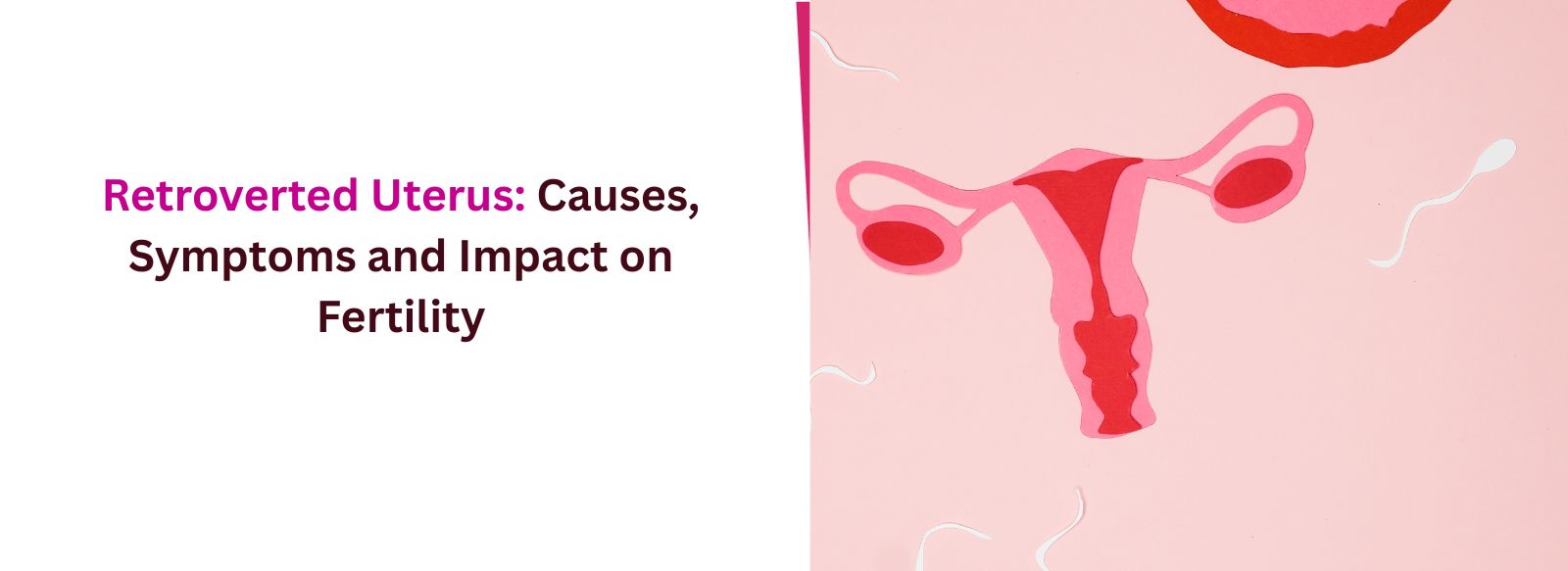Endometrial thickness refers to the measurement of the inner lining of the uterus, known as the endometrium. This soft, mucous-rich layer plays a vital role in a woman’s fertility journey. Each month, it grows under the influence of hormones to prepare for a possible pregnancy. If an egg is fertilized, the embryo implants in this lining and begins to develop.
A healthy endometrial lining is essential for conception, whether naturally or through IVF for endometriosis fertility. It provides the nourishment and support an embryo needs to implant and grow. When this lining is too thin, the chances of successful implantation decrease, leading to fertility challenges.
However, the good news is that a thin endometrial lining can often be improved. Through a combination of medical treatment, lifestyle modification, and supportive therapies, the uterine lining can regain its optimal thickness and receptivity, improving the chances of pregnancy.
Endometrial Thickness: Definition, Role, Normal Range
The endometrium is the inner mucous membrane that lines the uterus. Its primary function is to thicken each menstrual cycle in preparation for pregnancy. If fertilization occurs, the embryo implants in this layer, where it receives oxygen and nutrients to develop. If pregnancy doesn’t occur, the lining sheds during menstruation.
A healthy endometrium acts like fertile soil supporting the implantation and nourishment of the embryo. Its quality and thickness directly influence fertility outcomes, both in natural conception and assisted reproductive treatments like IVF.
Normal Range
The ideal endometrial thickness typically ranges between 8 to 12 millimeters during the phase most suitable for embryo implantation.
During menstruation, the lining is at its thinnest (1–4 mm).
In the proliferative phase (days 5–14 of the cycle), it begins to thicken, reaching around 10–16 mm before ovulation.
In the secretory phase (after ovulation), it reaches its peak thickness of about 18 mm, preparing for possible implantation.
Ultrasound is commonly used to measure endometrial thickness and assess uterine readiness for conception.
Hormonal Role
Estrogen is the key hormone responsible for developing a thick, blood-rich endometrial lining. During the first half of the menstrual cycle, estrogen levels rise, stimulating the regeneration and proliferation of endometrial cells. This process ensures that the uterus becomes receptive to an embryo.
Inadequate estrogen levels or hormonal imbalance can lead to a thin endometrium, making implantation difficult. Maintaining optimal hormonal balance is therefore critical for reproductive success.
Causes of Thin Endometrium
A thin endometrial lining is often defined as less than 7 mm during the mid-luteal phase of the menstrual cycle. Several factors can contribute to this condition, affecting the uterus’s ability to support implantation and early pregnancy.
Hormonal and Medical Factors
The most common cause is low estrogen levels, which prevent the endometrium from thickening properly. Estrogen plays a crucial role in building a soft, receptive lining, and when its levels drop, the endometrium remains thin and underdeveloped.
Long-term use of birth control pills or ovulation-inducing drugs such as Clomiphene Citrate (Clomid) can also contribute. Excessive use of these medications can block estrogen receptors in the uterus, reducing the hormone’s effect on endometrial growth.
Age is another influencing factor. As women get older, hormonal function declines naturally, and the lining may not regenerate as effectively as before.
Structural Causes
Physical abnormalities inside the uterus can also lead to thinning. Conditions like uterine adhesions (Asherman’s syndrome), fibroids, polyps, or endometriosis may alter the structure of the uterine cavity or restrict blood supply to the endometrial tissue.
These issues disrupt the healthy regeneration of the lining and can create an environment less favorable for embryo implantation. In severe cases, scarring from previous surgeries or infections can permanently reduce the ability of the endometrium to rebuild each cycle.
Blood Flow Issues
Adequate blood flow to the uterus is vital for maintaining a thick, nutrient-rich lining. When circulation is poor, the uterine environment becomes less receptive.
Studies have shown that thin endometrium often corresponds with high vascular resistance and reduced uterine perfusion, meaning the tissue receives less oxygen and nourishment.
This may occur due to vascular health problems, sedentary lifestyle, or chronic stress affecting circulation.
Lifestyle and Nutrition
Lifestyle habits can have a significant effect on uterine health. Stress triggers the release of stress hormones that constrict blood vessels, reducing blood flow to the reproductive organs. Over time, this can lead to a thinner lining.
Nutritional deficiencies, such as low levels of iron or essential vitamins, may also hinder cell growth and repair. A diet lacking in nutrient-dense foods, dehydration, or frequent consumption of cold and processed foods can affect circulation and tissue vitality.
Symptoms and Effects of Thin Endometrium
A thin endometrium often does not cause visible symptoms at first, but several signs can indicate a problem.
Common Signs
Women with a thin uterine lining may experience painful or light periods, sometimes with blood clots or unusually short menstrual flow.
Difficulty conceiving or repeated implantation failures during IVF cycles are also strong indicators. In some cases, recurrent miscarriages may occur because the embryo cannot remain securely attached to the uterine wall.
Impact on Fertility and IVF Success
The thickness and quality of the endometrium directly affect embryo implantation and early pregnancy development. When the lining is too thin, it cannot provide adequate nutrients and oxygen for the embryo. This results in lower implantation rates, reduced clinical pregnancy rates, and higher early pregnancy loss in both natural and assisted reproduction cycles.
Pregnancy Complications
Even if pregnancy occurs, inadequate endometrial growth can lead to complications such as early miscarriage, poor fetal growth, low birth weight, or preterm labor. These outcomes highlight how vital a healthy uterine lining is for both conception and sustaining a healthy pregnancy.
Natural Remedies to Improve Endometrial Thickness
Improving endometrial thickness naturally focuses on enhancing blood flow, reducing stress, and supporting hormonal balance. These approaches can be highly effective, especially when started early and combined with medical guidance.
Stress Management
Chronic stress constricts blood vessels, reducing oxygen and nutrient delivery to the uterus. Relaxation techniques such as yoga, deep breathing, guided meditation, or even light hobbies can help relax the uterine muscles and improve circulation. A calm mind supports healthy hormonal rhythms and a more receptive uterine lining.
Gentle Exercise
Regular movement improves overall blood circulation, which is essential for uterine health. Simple exercises such as brisk walking, light jogging, or stretching for 30 minutes a day can help increase blood flow to the pelvis and promote a thicker endometrial lining.
Adequate Rest and Sleep
The body regenerates and balances hormones during rest. Getting at least 7 hours of sleep each night helps repair tissues, regulate estrogen, and maintain optimal reproductive function. Sleep deprivation, on the other hand, can disrupt ovulation and hormonal signaling.
Keeping the Body Warm
Traditional and medical observations both emphasize that a warm body supports better uterine circulation. Cold exposure such as iced drinks, raw cold foods, or bare feet in cold weather can restrict blood flow. Instead, consume warm meals and drinks, wear comfortable clothing, and keep your abdomen and feet covered during colder months or while trying to conceive.
Castor Oil Packs and Pelvic Massage
Applying a castor oil pack on the lower abdomen during the follicular phase (days 5–14) may help stimulate lymphatic flow and improve pelvic circulation. Similarly, gentle pelvic massage can enhance uterine blood flow when combined with proper hormone therapy, improving endometrial thickness and implantation rates.
Hydration and Balanced Routine
Dehydration can make cells sluggish and reduce blood flow. Drinking enough water each day helps maintain uterine health. Alongside hydration, following a balanced daily routine with stress-free mornings, consistent meal times, and adequate relaxation periods helps the body remain hormonally aligned.
Diet and Nutrients That Support Endometrial Growth
A balanced diet is one of the most effective ways to support the growth of a thick, healthy endometrial lining. Certain nutrients directly affect blood quality, hormone function, and cell regeneration—all crucial for preparing the uterus for implantation.
Iron-Rich Foods
Iron nourishes the blood and prevents thinning of the endometrial tissue caused by low hemoglobin levels. Include spinach, beetroot, lentils, beans, pumpkin seeds, and lean red meat in your diet.
Vitamin C for Better Absorption
Vitamin C enhances iron absorption and supports tissue repair. Add citrus fruits, strawberries, tomatoes, bell peppers, and broccoli to your meals.
Whole Grains for Hormonal Balance
Whole grains like brown rice, oats, quinoa, and multigrain bread help stabilize insulin and hormone levels. Regular intake can improve endometrial thickness by improving metabolic and circulatory functions.
Omega-3 Fatty Acids
Found in salmon, mackerel, walnuts, and flaxseeds, omega-3s improve blood flow to the uterus and reduce inflammation. Including these 2–3 times a week can help make the lining more receptive.
Nitric Oxide-Producing Fruits
Fruits like pomegranate, lemon, lime, and watermelon boost nitric oxide levels, which dilate blood vessels and enhance uterine circulation. This directly supports the thickening process of the endometrial tissue.
L-Arginine
This amino acid, present in fish, poultry, soy, whole grains, and dairy, improves uterine and pelvic blood flow. Regular intake can help increase endometrial thickness and improve implantation potential.
Vitamin E Supplementation
Vitamin E is a powerful antioxidant that supports cell growth and improves estrogen levels. Clinical findings suggest that 500–700 mg daily can increase endometrial thickness by up to 2 mm and reduce inflammation.
Coenzyme Q10 (CoQ10)
CoQ10 helps reduce oxidative stress and supports energy production in uterine and egg cells. It can promote healthier follicles and a stronger uterine lining when taken regularly under medical supervision.
Clinical Treatments to Improve Endometrial Thickness
When natural methods and dietary support are not enough, medical treatment becomes essential to help the uterine lining reach optimal thickness. These treatments are carefully personalized based on hormone levels, uterine condition, and previous reproductive history.
Estrogen Therapy
Estrogen is the cornerstone of endometrial development. Estrogen therapy (through oral tablets, transdermal patches, or vaginal applications) stimulates the growth of endometrial cells and improves blood flow within the uterine wall.
Vaginal route is often the most effective, as it delivers higher local concentrations directly to the uterus.
Regular monitoring is required to ensure proper response and to balance estrogen with progesterone, reducing risks such as overgrowth or clotting.
Vaginal Sildenafil (Viagra)
Sildenafil citrate, a well-known blood flow enhancer, helps dilate uterine blood vessels and improve oxygenation. Used in a vaginal form, it has been shown to increase endometrial thickness up to 9 mm in women with previously resistant thin linings.
Typical dosage: 25 mg four times daily, always under fertility specialist supervision.
Low-Dose Aspirin
Low-dose aspirin (75–100 mg daily) improves uterine blood flow and reduces clotting risks. It enhances endometrial receptivity and recovery after uterine injury, though it may not directly increase thickness. Often, it’s used alongside estrogen therapy in IVF protocols.
GnRH Agonists (GnRH-a)
These medications trigger a brief “flare-up” of hormone release, stimulating estrogen production and improving endometrial development. Used before frozen embryo transfer (FET) cycles, they can lead to higher pregnancy and live birth rates compared to other regimens.
Growth Hormone (GH)
Growth hormone increases endometrial blood perfusion and promotes the release of IGF-1 (insulin-like growth factor), aiding in cell regeneration. Intrauterine GH administration is particularly effective and has shown improvement in implantation, clinical pregnancy, and live birth rates.
Intrauterine HCG Infusion
Administering human chorionic gonadotropin (HCG) directly into the uterine cavity stimulates growth factors such as VEGF and LIF, which improve vascularization and embryo tolerance. This method can help women with recurrent implantation failure or persistently thin lining.
Tamoxifen (TMX)
Tamoxifen, commonly used in hormone regulation, works as a selective estrogen receptor modulator. When combined with hormone replacement therapy (HRT), it helps enhance endometrial proliferation, often leading to better outcomes for women who don’t respond to estrogen alone.
These medical treatments are usually customized at Vardaan IVF Hospital after careful hormonal and ultrasound evaluation, ensuring that each woman receives the most appropriate and effective plan for her fertility goals.
Advanced and Regenerative Therapies
In cases where conventional treatment doesn’t yield adequate results, advanced regenerative therapies can help rebuild and restore the endometrial lining. These treatments focus on stimulating natural repair and cell growth in the uterus, offering new hope for women with chronically thin or damaged linings.
Platelet-Rich Plasma (PRP) Therapy
PRP therapy uses plasma extracted from the patient’s own blood, enriched with platelets that contain powerful growth factors such as VEGF, PDGF, and EGF. When infused into the uterus, PRP promotes cell regeneration, improves vascularization, and stimulates endometrial growth.
It’s a minimally invasive procedure that has shown significant improvement in endometrial thickness, implantation rates, and clinical pregnancies.
Intrauterine G-CSF Infusion
Granulocyte Colony-Stimulating Factor (G-CSF) is a natural glycoprotein that promotes cell growth and the formation of new blood vessels. When infused directly into the uterus, G-CSF can successfully increase endometrial thickness beyond 7 mm, even in women with previously refractory thin lining.
Stem Cell Therapy
For women with severe or long-standing thin endometrium, stem cell therapy offers an advanced option. Mesenchymal stem cells (MSCs), derived from bone marrow or menstrual tissue, are used to regenerate damaged endometrial cells and improve uterine function.
While still a specialized and evolving treatment, it has led to successful pregnancies in women who had not responded to other methods. However, it requires expert handling, advanced facilities, and careful follow-up.
Endometrial Scratching
This technique involves gently scratching the endometrial surface near ovulation to trigger the body’s natural healing response. The controlled injury stimulates tissue regeneration, encouraging the formation of a thicker and more receptive lining before embryo transfer.
Complementary Therapies
Integrative approaches such as acupuncture and traditional Chinese medicine (TCM) are gaining attention for their ability to improve uterine blood flow and hormonal balance. Studies show that acupuncture combined with physiotherapy may help increase endometrial thickness by regulating cellular pathways and promoting better oxygen delivery to the tissue.
When to Seek Medical Help?
A thin endometrial lining can often improve with lifestyle changes and nutritional care, but medical evaluation becomes essential when it consistently measures below 7 mm or fails to respond to natural efforts. Early assessment by a fertility specialist ensures that the underlying cause is correctly identified and treated in time.
You should seek medical help if you experience:
Irregular, scanty, or painful periods
Repeated IVF failures or implantation issues
Recurrent early miscarriages
Ultrasound reports showing persistently thin endometrium
A fertility expert will usually perform a transvaginal ultrasound to measure thickness, check the uterine blood flow, and identify any structural abnormalities like adhesions or fibroids. Hormone level testing may also be advised to understand estrogen function and overall ovarian health.
Final Thoughts
A healthy endometrial lining is one of the most crucial factors in achieving and sustaining pregnancy. It serves as the foundation for embryo implantation and growth, providing nourishment and stability during early development.
Many factors (ranging from low estrogen levels and poor circulation to lifestyle and nutritional deficiencies) can lead to thinning. The good news is that most cases of thin endometrium are reversible with timely medical care, dietary correction, and supportive therapies.
Modern fertility science now offers multiple safe and effective options, from enhanced medication to advanced regenerative techniques like PRP and stem cell therapy. Each treatment is designed to restore the uterus to an optimal, receptive state.
At Vardaan IVF Hospital in Jalandhar, our team focuses on combining medical precision with compassionate care. Every treatment plan is personalized, helping women rebuild their uterine health and renew their confidence on the journey to conception.
A healthy endometrium is not just about thickness. It’s about balance, nourishment, and readiness. With expert guidance and the right support, a stronger, more receptive uterus is within reach for every hopeful mother.
Disclaimer: All the medicines or therapies mentioned in this article are only for educational purposes and require a professional prescription before taking any dose. Self-medication is not recommended.

